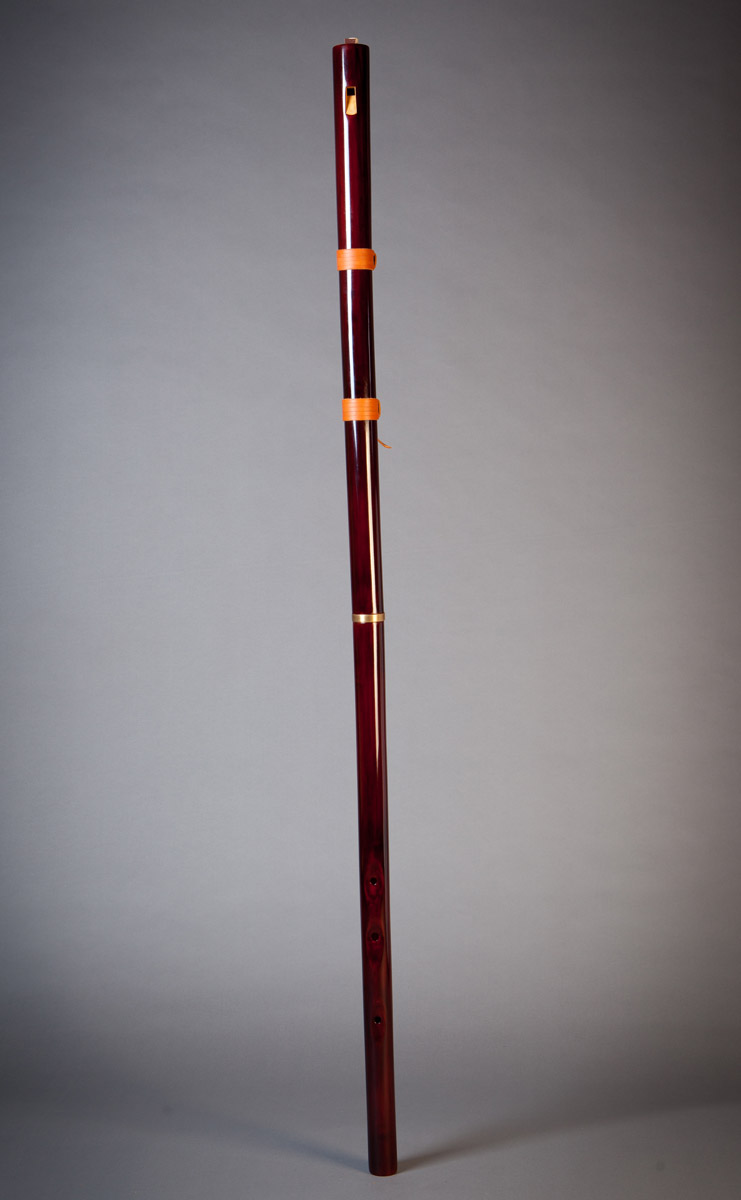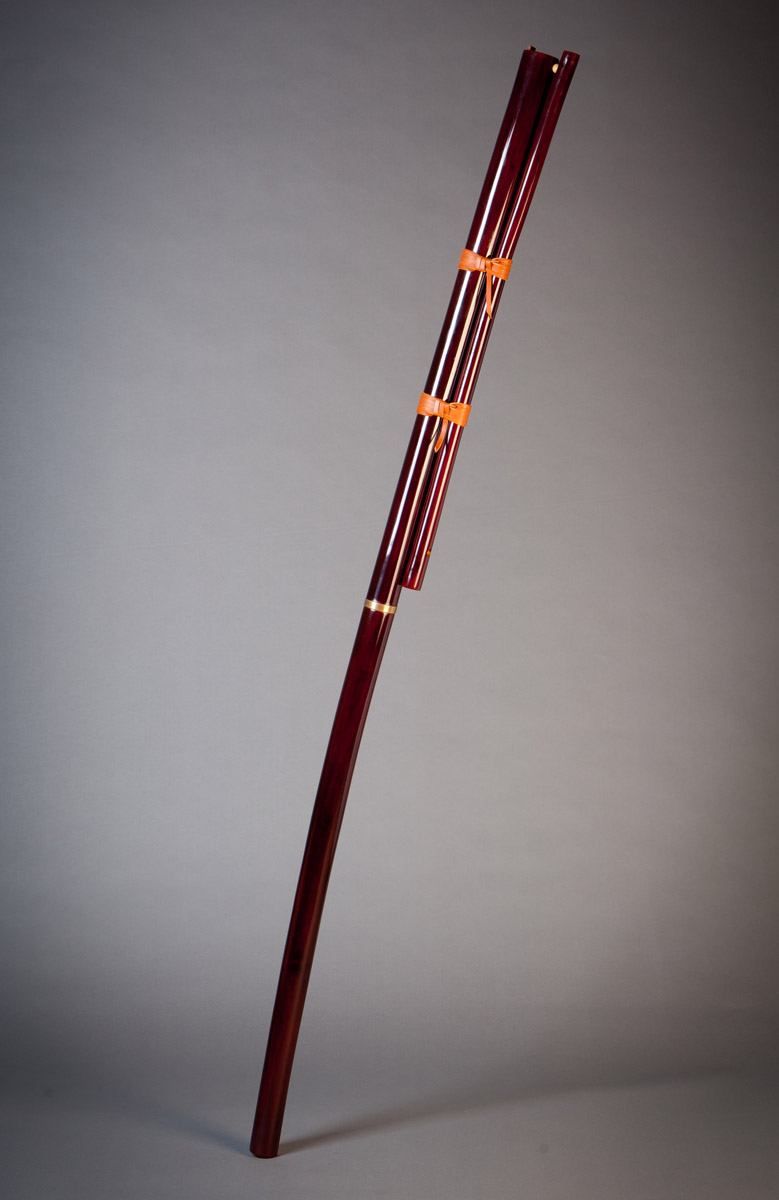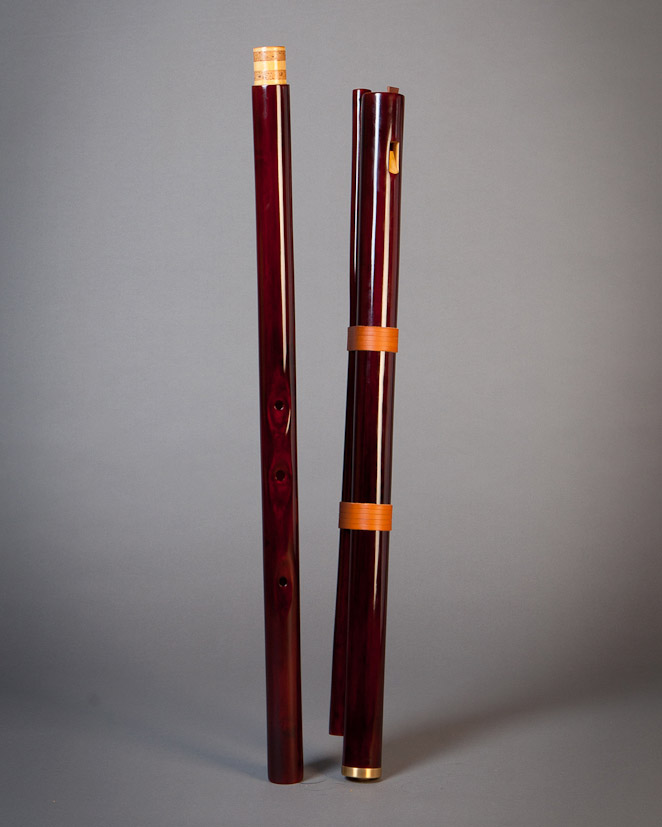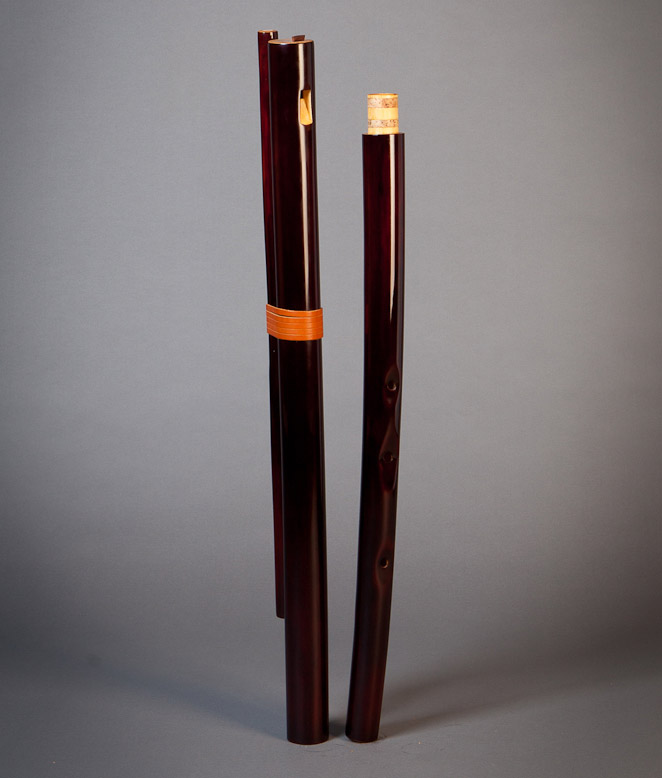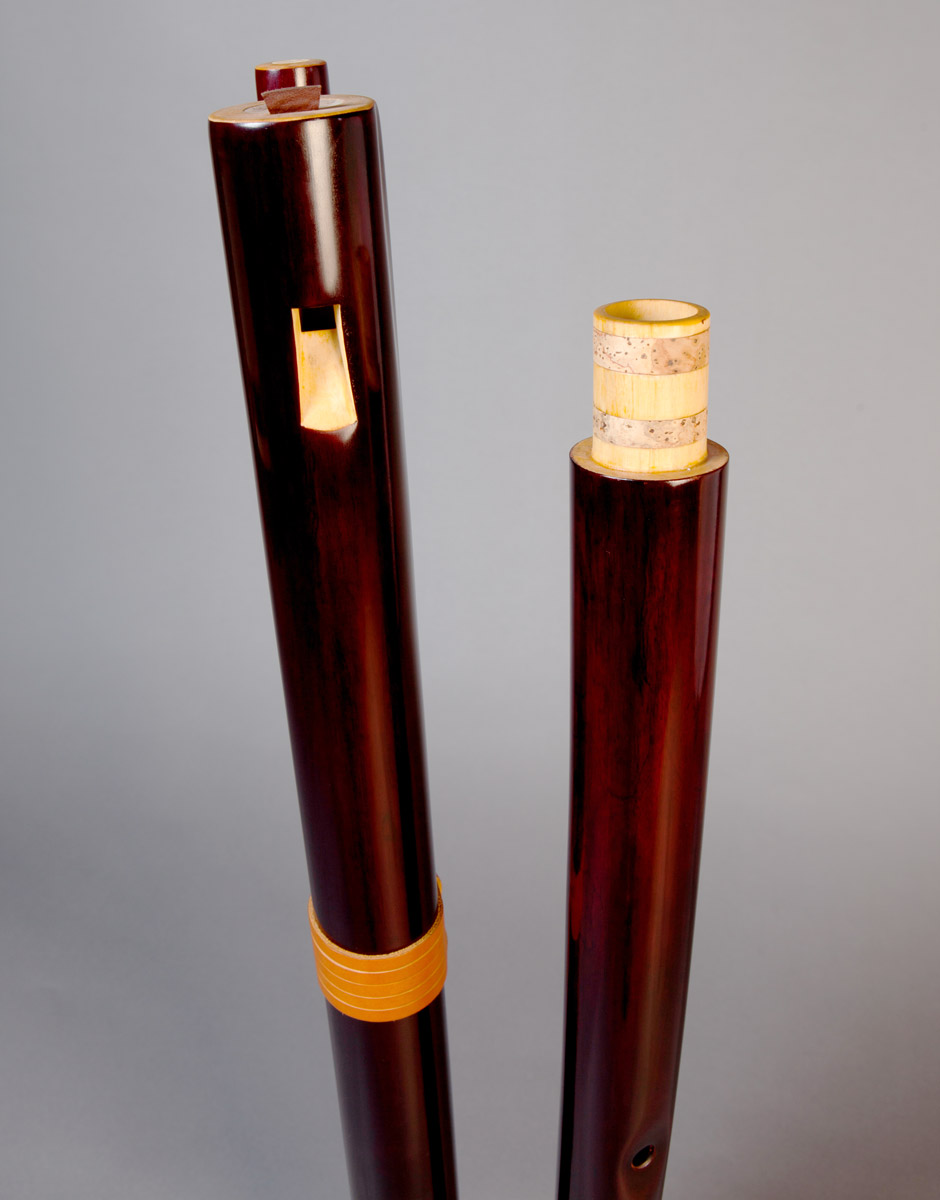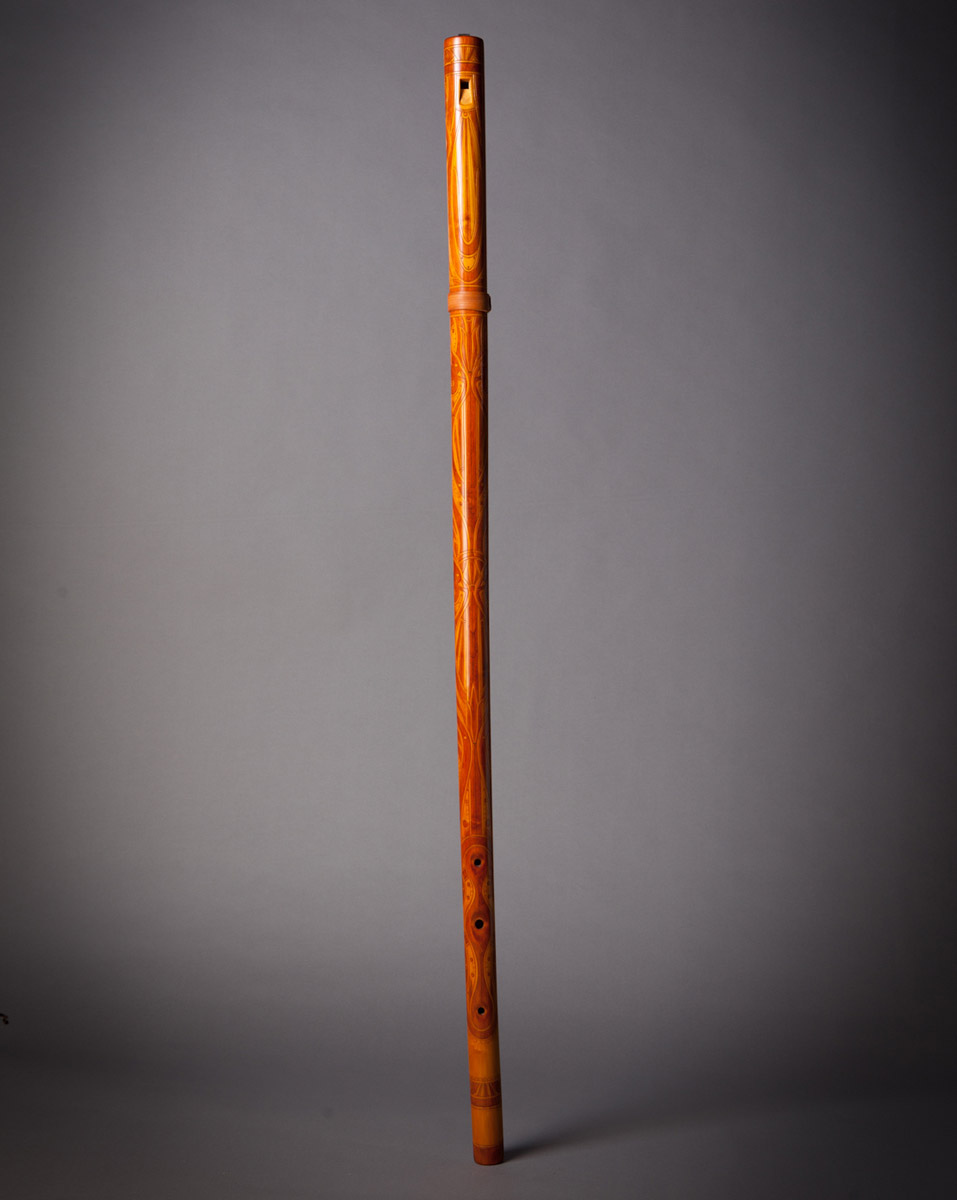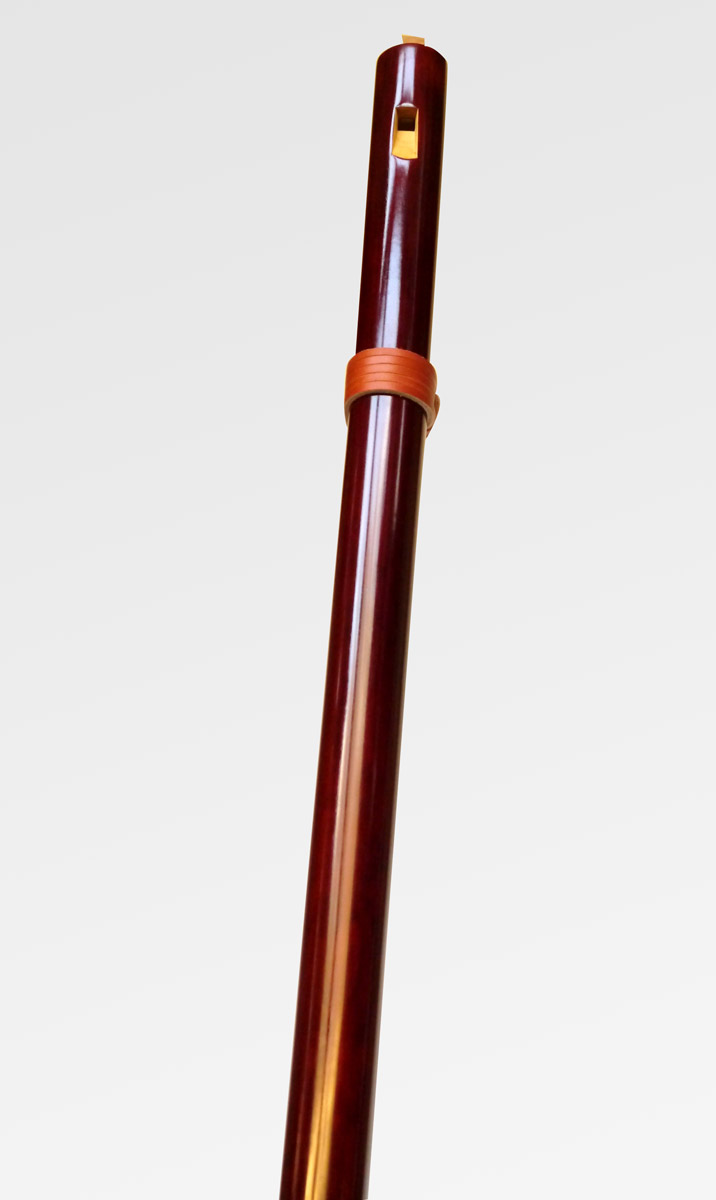Fujara
The fujara is a long 3-holed fipple flute played in standing position, with the flute held close to the body. The fujara flute is played using the natural harmonics system, which means the different tones are played by controlling the strength of in-blown air. Using only three holes, the diatonic major scale can be reached playing two and a half octaves. Due to the natural harmonics the tuning will always be a compromise, but I put a great deal of effort in tuning and balancing the tones, in such a way that playing together with Western tuned instruments is possible.
The fujara has a unique unforgettable sound with very rich sounding multiphonics, grain and timbre, which reaches deep down into the heart of player and listener. The fujara's origin lays in the middle of Slovakia, and it is assumed that it´s roots would lay with the 3-holed flutes played by the tambourines in the 12th and 13th century in Europe. The fujara was played by the shepherds on their long journeys away from home. It is said when played for the sheep it would calm them down and ease the herd.
Fujara solo by Winne Clement on G Fujara
Big Fujara in E
Hand-drilled solid piece Elder wood, 18-layered dark hand-polished finish.
2m 4cm
This flute can be seen in both the video above and the following video:
Fujara and Bass Improvisation - Sequence One
Fujara and Bass Improvisation - Sequence Two
Fujara in F#
Elder wood, hand-drilled and hand-cut collapsible joint, oil and resin finish.
1m 84cm
This flute can be seen in the following video:
Winne Clement - Improvisatie I
Fujara in F#
Hand-drilled and hand-cut collapsible joint, 18-layered hand-polished finish.
1m 84cm
Fujara in G
Hand-drilled pieces of Elder wood, hand-cut collapsible joint, 18-layered dark hand-polished finish.
1m 71cm
This flute can be seen in the following video:
Improvisation on hand drilled collapsible Fujara in key of 'G'.
Fujara in G
Hand-drilled solid piece of Elder wood, linear carvings, oil and resin finish.
1m 70cm
Fujara in G
Hand-drilled solid piece of Elder wood, elaborate carvings and stain.
1m 70cm
Fujara in G#
Handdrilled solid piece of Elder wood, dark polish finish.
1m 63cm
This flute can be seen in the following video:
Winne Clement - Improvisatie II
Fujara in A#
Hand-drilled solid piece of Elder wood, 10-layered natural hand-polished finish.
1m 45cm
Fujara in key of C
Solid piece of hand-drilled Elder wood, dark 18-layered hand-polished finish.
1m 25cm
This flute can be seen in the following video:
Small C Fujara
Playing a Fujara
Fujara playing comes very naturally. The system of overblowing and the reach of different tones by changing the pressure of in-blown air allows the musician to deeply experience tones and sound, and search for the right melody by feeling and intuition. This makes fujara ideal for improvisation, and practicing a lot of fun.
Scale and Range
Example in G
Blow the first note of the fujara scale, G1 (G3), uncover the first hole, and get A, second hole B, third hole gets C. Cover all again, overblow, and get D. Then open first hole again and get E, second F#, and then close all three again, overblow, and get G2 (G4). Going up the harmonics the distances between the notes get shorter.
In the highest reachable octave, notes are mostly played by overblowing the overtones in a scatter, although the first three notes of this octave can always be used for general play using fingering.
Quality Standards
What makes a good Fujara?
Rich overtones.
Overtones rich in multiphonics, and clear up to the high notes, when the scatter is blown, without a hissing noise (when full strenghth is applied duringh blowing all of the air should be tramsformed into clear sound).Rich haunting voice.
The voice of a fujara should have lots of character with a nice warm grain, slightly harsh, but without disturbing the purity of tone.
Breath Efficiency.
Although not easy for beginning fujarists this is very important! It allows the musician to put much more variation in his play, changing the amount of pressure, and allows to really stretch the tones, which gives lots of character to the play. This enables the musician to play the glissando without jumping to the next tone too fast.
Good Tuning and Playability.
It being an overtone flute, good tuning will always be a compromise. But a well tuned fujara should easily play two and a half octaves (without off notes). All fujaras available here play the first three notes of the highest octave in such a way that it can be used for playing melodies (see fingering charts).
Good Balance.
A good fujara should have a well-established base tone, and clear high tones.
The Fujara Range
The fujara is made this way so it would play starting at the second overtone up to the ninth overtone, covering two full octaves of the diatonic major scale. The fundamental is there but is very quiet and weak, and traditionally not used (see fingering charts).
Fujara Construction
The fujara has two parts held together by a strap of leather. The main tube, which is the flute proper, and an air pipe allowing the player to reach the finger holes. The original air channel at the top, the same as with a normal fipple flute, is used by the maker to check the voice, and sounds during the making process. A piece of leather is fitted in to prevent air from leaking, but which can still be removed for cleaning purposes of the channel. This should always be done with grate care with a piece of feather ore paper, never with a hard object what can ruin the flute. The mouth piece itself is a small conical wooden tube that is removed each time after play. A cork closes of the bottom end of the pipe and also has to be removed after playing for letting out condensation.














